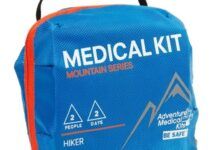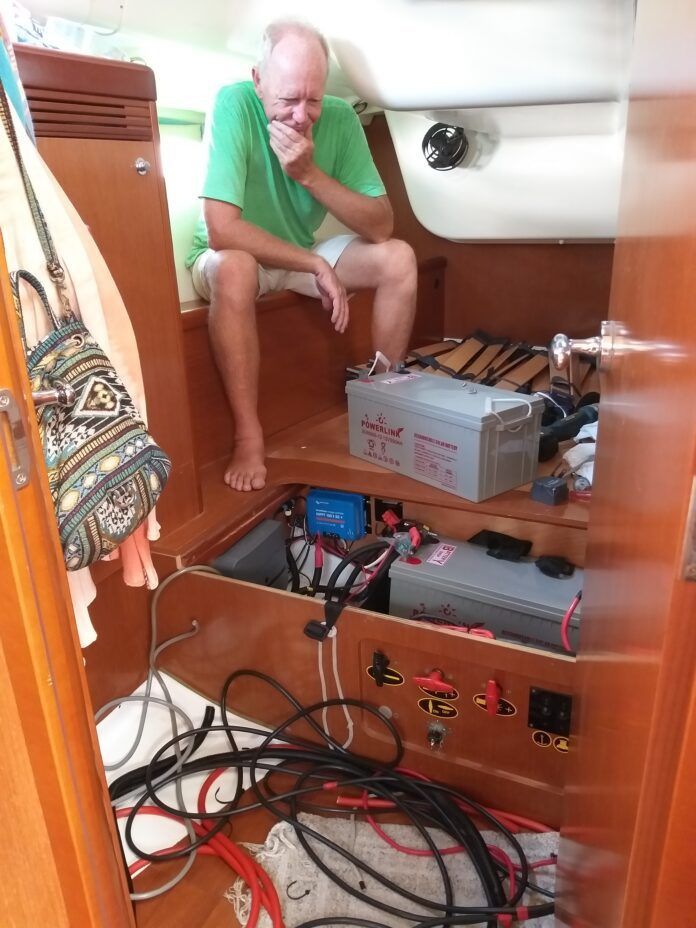My wife Amanda often asks fellow cruisers the question: Would you prefer to sail with an experienced mechanic who knew little about sailing, or an experienced sailor who knew little about mechanics? As an experienced sailor, I think I’d go with the former. In the last 11 years of living onboard we’ve managed to keep our Beneteau Oceanis 43 Leventeia moving with (very) basic technical skills.
Before I retired, I had some involvement with heavy industry, improving the efficiency of maintenance systems. This was process work—I don’t have any experience of working on the tools. Generally speaking, maintenance was planned based on timing or milestones (for us an example would be engine hours), repairs were unexpected events prioritized on severity (e.g. being holed under the waterline), and improvements were made when inspiration struck (e.g. we realized we needed marriage savers). Boat improvements will be the focus of this series’ final article.
Amanda agreed to sail around the world on the proviso that we wouldn’t be camping onboard. I promised that we had plenty of power, water and everything we needed for comfortable live-aboard cruising. I was wrong! Since setting off we have added more power generation and an inverter. This means we can boil the jug for our morning cuppas, cook with the microwave and induction hotplate, watch movies on the bulkhead-mounted TV screen, and keep the hot water topped-up during the middle of the day. Our new front-loading washing machine keeps our clothes clean and fresh. Our renewable power means we only top-up our 9kg propane tank every year. We carry a Honda 2kW generator onboard, but only use it on cloudy, windless days. Which is seldom.
As well as the Blue Nova lithium batteries, solar panels, a D400 wind generator and a 2kW Victron inverter, we have improved Leventeia by adding other off-the-shelf items such as a Max-Prop folding propeller, a Schenker 30-litre, pH watermaker, and a Hydrovane windvane self-steering system. These are standard items about which Practical Sailor has published many great articles, see “Folding vs. Feathering Props,” “Schenker Watermaker,” “DIY Survey of Boat Solar and Wind Turbine Systems,” “Leaping into Lithium” and “Solar Panels: Go Rigid if You Have the Space.” They have made a huge difference to our boat and our lifestyle, as they have to many others. However, in this article I’ll talk about some of our non-standard boat improvements and why we made those changes.
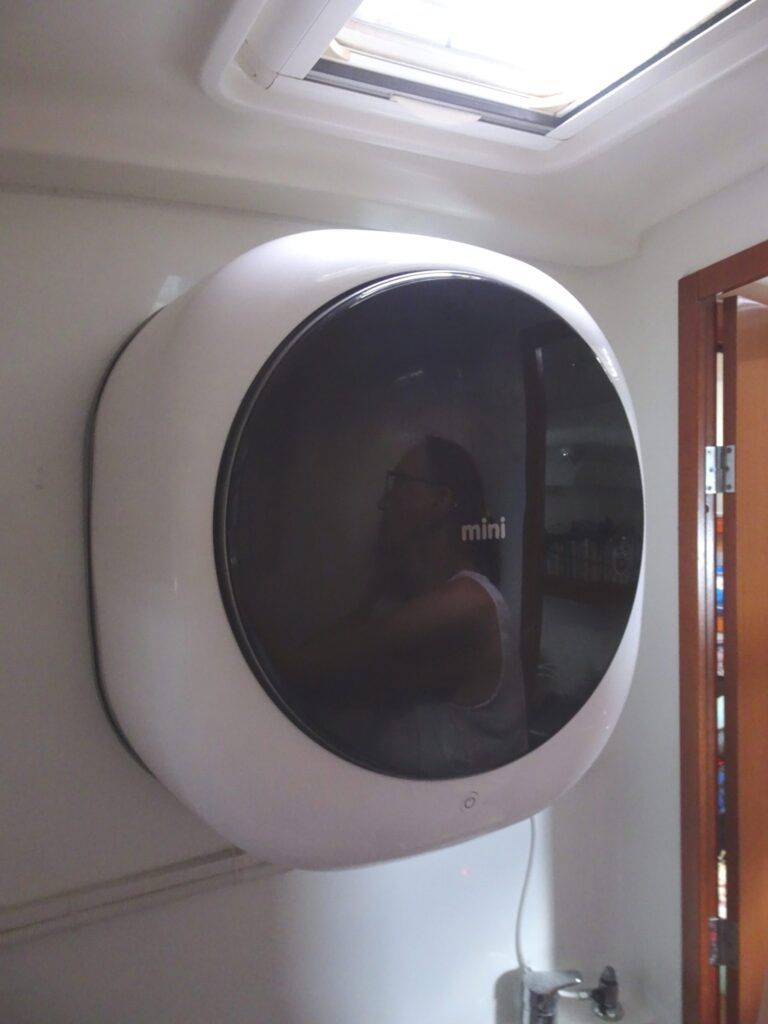
CUSTOMIZING A PRODUCTION BOAT
COCKPIT
Leventeia has been our home since 2017. Beneteau builds good boats, but they are production boats with very little individuality. Our cockpit is our main living area, so we’ve added fully enclosing clears which give us all-weather protection in the biggest room in the house. We have a twin wheel set-up, and one of the most-enjoyable additions for me is the fold-up quarter seats. These allow great visibility down the side of Leventeia and are an absolute joy on those rare occasions I steer from leeward watching the genoa telltales. Another cockpit improvement we have made is adding a day bed. With a fold-up base supported on lugs drilled into the side of the port settee, we have a great 1.8m by 1.6m (5.9-ft. by 5.2-ft.) lounge, still with good access through the cockpit on the starboard side of the table. When on passage, Amanda and I keep 6-hour night watches. With a 20-minute alarm, the “day” bed helps me get through those difficult hours around 4 a.m.
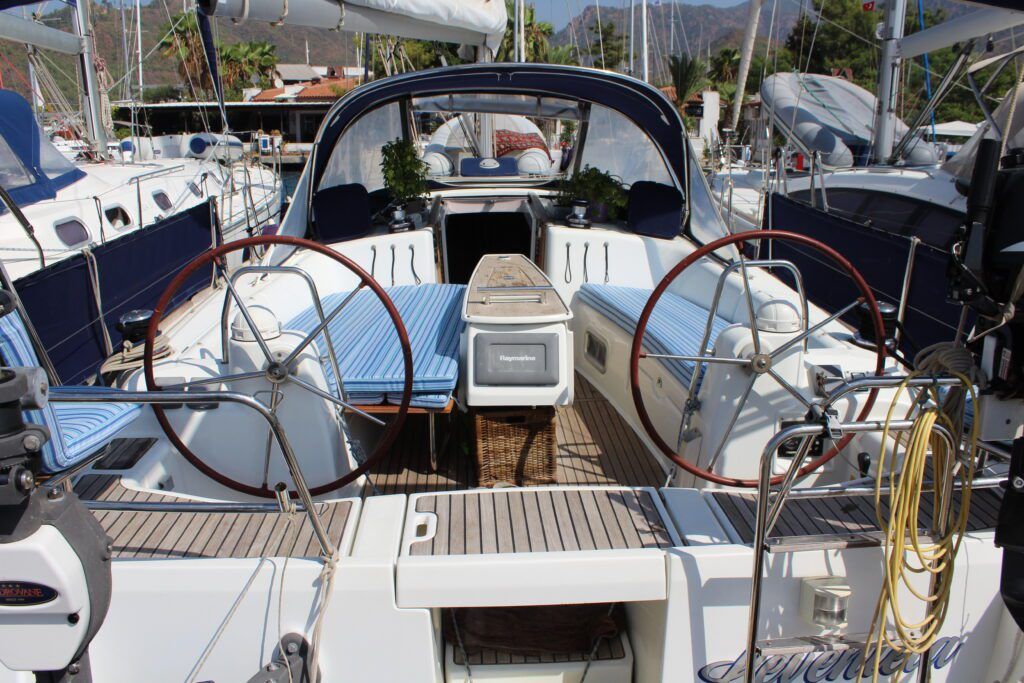
GALLEY
We have been generally delighted with Leventeia, however Amanda is convinced the galley was designed by a non-cook. There is no light above the food preparation bench (another job which has just been added back to our list), and the cupboard under the forward bench reached 1.5 meters (4.9 feet) back to the hull. To access the far reaches of this cupboard, we added a “pot-hole,” which is a very simple trapdoor which allows us to use this previously unreachable space.
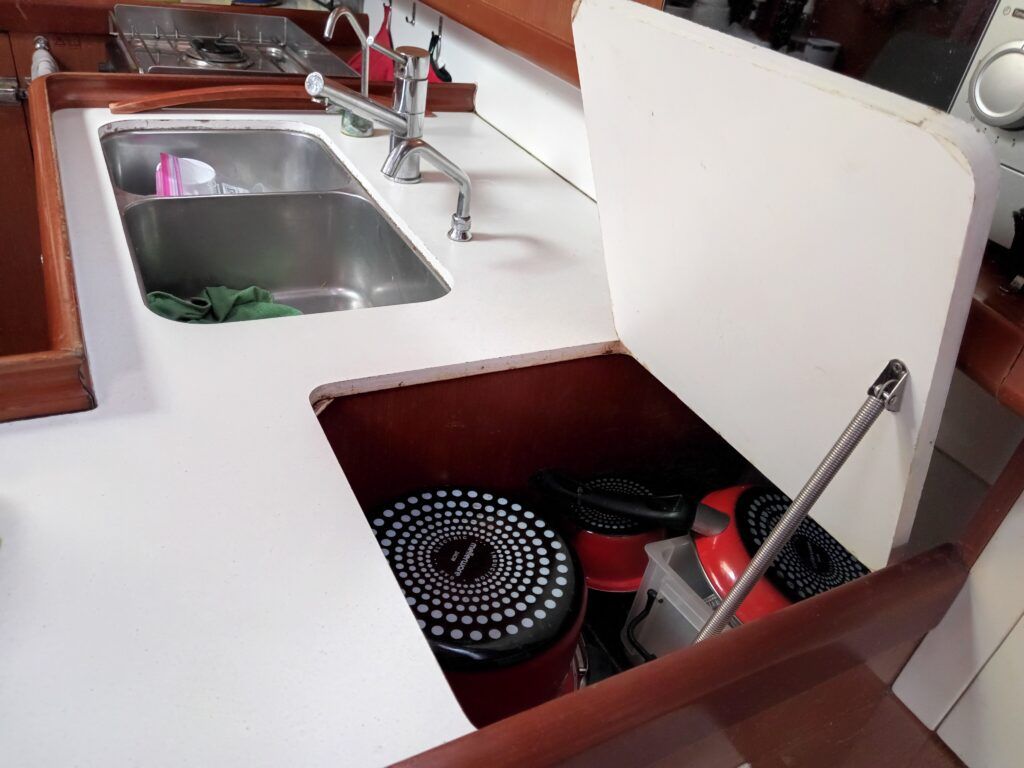
SAILS
After ten years of constant use, we replaced our sails when we were in South Africa. We installed a removable forestay, which joins the mast just below the original forestay giving us a solent rig. Our new staysail, which can be reefed down to a storm sail, is hanked onto the inner forestay. We went for this arrangement rather than a furled staysail as we felt it gave more flexibility to the foredeck, and if everything turned to custard we could simply dump the staysail without furling. Amanda made a “body bag” for the sail, which means we can leave it hanked on and rolled up on the deck or removed and stowed if we are only day sailing.
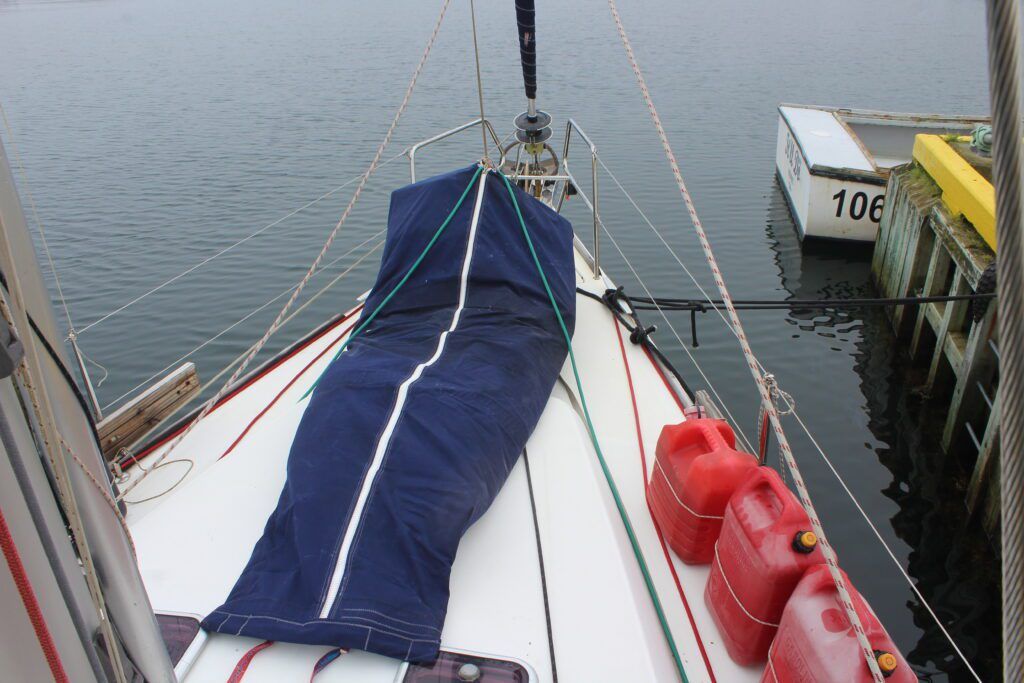
This is a relatively old-fashioned installation, but the flexibility and ease of emergency drop made it the right choice for us. Another slightly different sail arrangement was our new main. We were tossing up whether to go with two reefs and a trysail, or three reefs. We decided on a hybrid three-and-a-half reefs, with the third being very deep so it is the same size as a trysail. Below the third reef the sail is 8-oz. Dacron, but above is 10-oz. We always rig two preventers when sailing short-handed. Although this means we carry an extra line from the end of the boom, the confidence and control this enables when gybing takes some of the stress out of downwind sailing.
TRANSOM
Something that we haven’t seen on other boats is our transom arrangement. We use a small mooring spring to secure the dinghy painter to Leventeia’s stern. If we’re towing the dinghy this reduces the stress on the painter and the strong point. This was very useful when we were at anchor in San Andres off the coast of Nicaragua. The torrential rain could fill the dinghy in a matter of hours, and when the wind and chop came up the spring worked well to reduce the shocks of our very full, and therefore very heavy, dingy. We never secure our stern ladder, as we figure there may be times when we need to provide a way out of the water in a marina or recover a man overboard (we once rescued a drowning fisherman off Mafia Island in Tanzania). We come onboard from the dinghy over our stern, so we have a simple hand line secured over the ladder to grab onto.
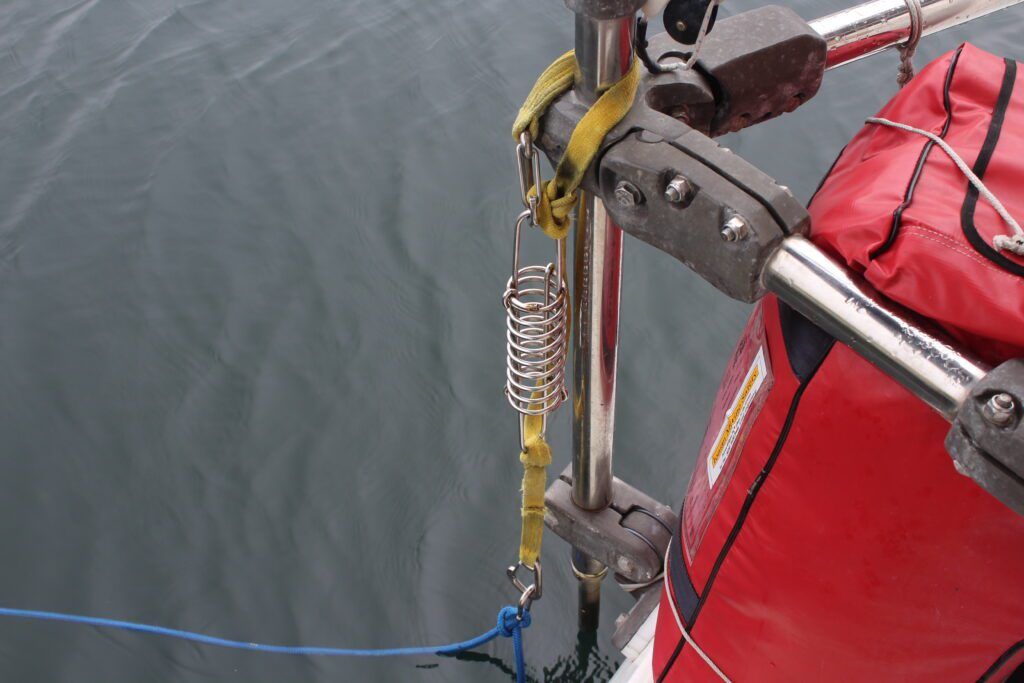
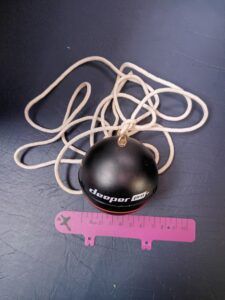
GADGETS
One item which has recently made our cruising less stressful is a handheld depth sounder. When we were cruising in Cuba at Cayo Campos, we had an uncomfortable moment where we could not find a safe passage to move from the south of the archipelago to the north. Eventually our cruising buddy in Carry On, a centerboard Allures 44, was able to find a way for us. We gunned the motor and left a cloud of sand in our wake, but we successfully crossed the bar. We have since bought a Deeper Fish Finder, which has helped us out on numerous occasions. In Lake Bras d’Or in Nova Scotia we wanted to leave the Crammond Islands via the south exit. The minimum charted depth was 2m, which is not enough for us to pass with confidence. However, with our Deeper (which we call the Snitch) tied to the dinghy we were able to map a few tracks to find the best pass, and then crossed the bar with a minimum depth of 3.6m (photo).
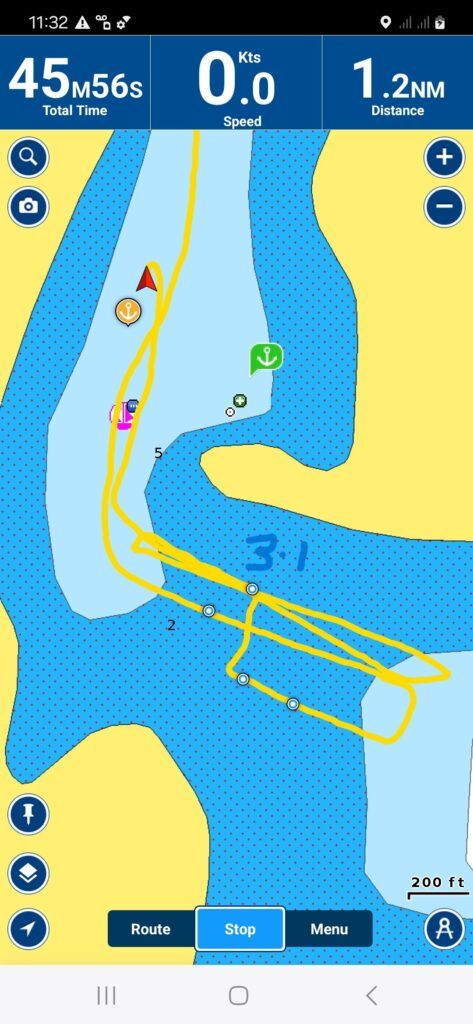
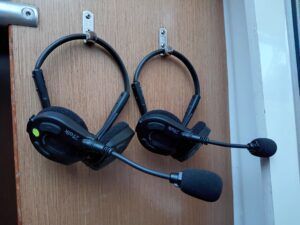
Although this may sound counter-intuitive for such an intimate living space, communications onboard can, at times, be fraught. We recently bought a set of My Team Talks “Marriage Savers” headphones. These are used most times one of us is on deck and the other is in the cockpit, such as rigging the spinnaker pole or when Amanda goes up the mast. When we anchor or pick up a mooring, Amanda is at the helm and I am forward. Generally, the 13 meters (42.6 feet) between us is a place of calm, rational conversation. But in windy or difficult conditions the air in that calm space can quickly turn blue. Our behavior has changed in surprising ways. We now maintain the calm no matter what the conditions, and my language has improved markedly. I no longer swear to myself, as these mutterings can now be heard back in the cockpit. Inappropriate comments instantly returned by someone who was previously isolated are a guaranteed way to reduce profanities.
FANS
In hot climates, keeping cool is critical for comfortable cruising. We have many friends who have air conditioning onboard. We can tell the boats with AC—they are the ones in quiet anchorages who are running their generators to keep the AC going. If we had an unlimited budget, we would consider AC, but the extra fans we installed in the galley, heads and saloon to compliment the standard fans in the fore and aft cabins work very well. Not as good as AC, but for a 12V solution they certainly improve our comfort.
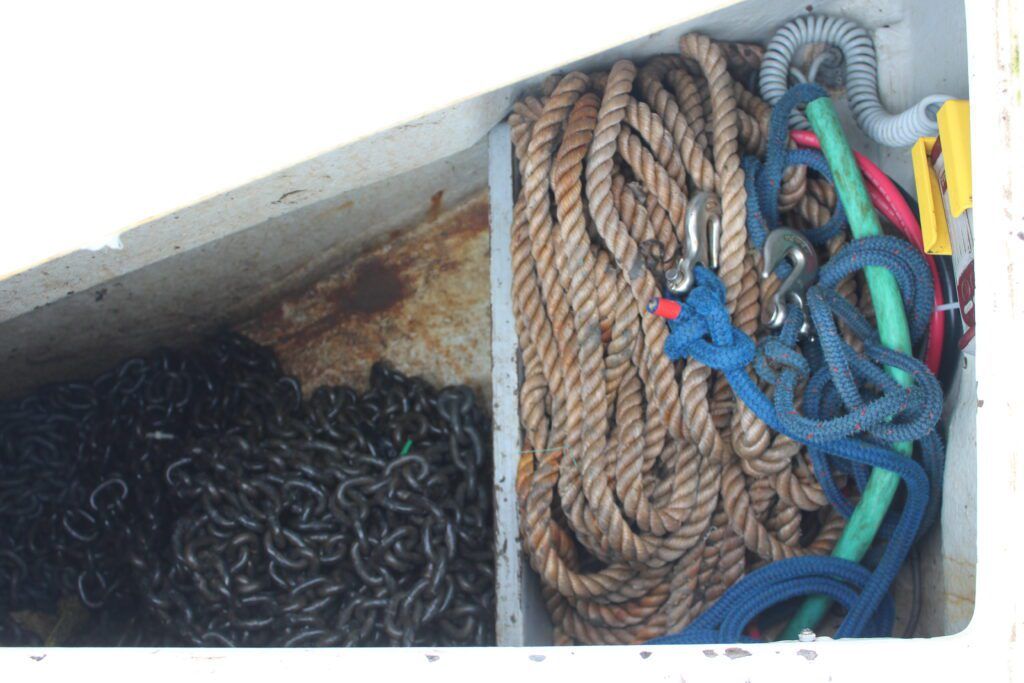
ANCHOR CHAIN LOCKER
When we recently replaced our 80 meters (262.5 feet) of chain, I cleaned out the chain locker for the first time in years. Previously, the chain, 35 meters (114.8 feet) of rope rode, our two snubbing lines, and our anchor angel—a 10kg (22-lb.) dumbbell weight—were all stowed in the one area. When the locker was clean and empty, I installed a vertical board just abaft the hawse pipe. This now means the chain is the only occupant of the space forward of the hawse pipe, and all the other paraphernalia is tidily stowed out of the way of the chain.
CONCLUSION
We always learn something new whenever we visit another boat. There are hundreds of ideas out there for small or large boat improvements. The above are a few examples of small changes which make a big difference for us. Our challenge is always to see what ideas would best fit Leventeia—and our budget. I hope the ideas shared in this article might stimulated a few thoughts to improve life onboard your boat.
Let us know in the comments which boat improvements are at the top of your wish list and which ones you’ve completed that you’re enjoying.



























